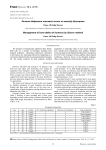Статьи журнала - Гений ортопедии
Все статьи: 2213
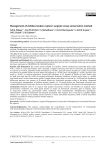
Management of Achilles tendon rupture: surgical versus conservative method
Статья научная
Introduction Current therapy for managing achilles tendon rupture are classified into surgical and conservative method. Randomized controlled trials were performed in multiple healthcare facilities in multiple centers across the world yet functional outcomes, re-rupture rate and complications are still indecisive. The aim of this study is to compare surgical versus conservative methods for the treatment of acute Achilles tendon rupture; including functional outcome, re-rupture rate, and complications to provide better guidance in selecting therapeutic method. Materials and Methods We conducted a comprehensive electronic database. Original articles until November 2023 were screened, focusing on randomized controlled trials with at least 12 months follow up. Our protocol has been registered at PROSPERO ID (CRD42023486152). Results and Discussion The initial search yielded 354 studies. Twelve randomized controlled trials study with a total of 1525 participants were assessed. Surgical treatment has better outcomes for preventing: re rupture (p ≤ 0.001), abnormal ankle movement (p ≤ 0.001), and calf muscle atrophy (p = 0.005). Functional outcomes at 6 months follow-up were better for hopping (p ≤ 0.001), heel-rise height (p ≤ 0.001), and heel rise work (p = 0.007) in surgical treatment. Functional outcomes at 12 months of follow-up were better only for heel rise work test (p ≤ 0.001) in surgical treatment. However, incidence of sural nerve injury (p = 0.006) was found lower in the conservative group. Complications other than re-rupture (p = 0.08) had no significant difference between two groups. At 6-month follow-up, functional outcome tends to be better compared to conservative management of Achilles tendon rupture. At 12-month follow-up, functional outcomes was comparable between two groups. However, the risk of re- rupture rate is higher in the conservative management. Conclusion Reduced rates of re-rupture and quicker functional recovery are benefits of surgical repair. Conservative treatment can yield good results in terms of functional outcomes and re-rupture rates in long term follow up, particularly when combined with contemporary rehabilitation procedures. Conservative treatment eliminates the hazards associated with surgery, but it may have a slightly higher chance of re rupture and a shorter initial recovery of some functional outcomes. Both of these treatment methods are good for treating Achilles tendon rupture. Level of Evidence: I.
Бесплатно
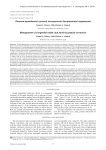
Management of congenital radial club hand by gradual correction
Статья научная
Introduction Severe congenital radial club hand is aesthetically unacceptable. This paper represents our experience in treating early and late diagnosed cases using gradual distraction by Ilizarov external fixator. Methods We treated 34 cases of congenital radial club hand with an age ranged from 1 to 15 years. There were 20 girls and eight bilateral cases. Three had been treated on both sides. So, we have treated 37 limbs. Nine cases had been operated before. Centralization alone was done in 12 cases and followed by lengthening in eight cases. Ulnar lengthening and gradual correction of wrist deformities were done for the rest of cases. The patients were followed clinically and radiographically with the following parameters: hand forearm angle, range of motion, daily functional activities, extent of lengthening achieved, and cosmetic improvement. Results The follow up ranged from 1 to 10 years. The magnitude of lengthening achieved ranged from 5 to 11 cm. The average healing index was 52.02 days/cm with cosmetic appearance satisfaction in all cases. Complications included; pin tract infection in 24 cases, flexion contractures of the elbow and fingers in 26 cases [which mostly disappeared during follow up], and spontaneous ulnocarpal fusion in 2 cases. Two cases suffered fracture in the regenerate zone. Conclusions The use of the Ilizarov method with gradual distraction of bone and soft tissues in treatment of radial club hand was effective in forearm lengthening with functional and cosmetic improvement.
Бесплатно
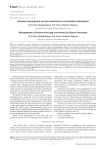
Management of forearm bone gap non-unions by Ilizarov technique
Статья научная
Purpose Proper treatment of forearm bone gap non-union should achieve both biological stimulation of the bone and elastic mechanical stability. The use of Ilizarov technique enhances the healing of a non-union providing osteogenic, osteoconductive and an optimal stability with the Ilizarov fixation. We retrospectively reviewed 26 patients affected by forearm bone non-union and treated with the Ilizarov fixation. Materials and Methods Twenty six patients were treated for gap non-unions of forearm bones with the Ilizarov compression distraction device from 2000 to 2015 in BARI-ILIZAROV ORTHOPAEDIC CENTRE. Results All the difficult non-unions healed in a mean of 7 months, ranging from 5 to 12 months. At the latest follow- up, forearm functions were satisfactory. Conclusion The Ilizarov compression distraction device is a fantastic tool in promoting the healing of forearm non-unions, even if the bones are very atrophic.
Бесплатно
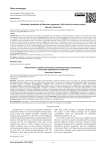
Mechanical stimulation of distraction regenerate. Mini-review of current concepts
Статья обзорная
Introduction One of the key limitations of distraction osteogenesis (DO) is the absence or delayed formation of a callus in the distraction gap, which can ultimately prolong the duration of treatment.Purpose Multiple modalities of distraction regenerate (DR) stimulation are reviewed, with a focus on modulation of the mechanical environment required for DR formation and maturation.Methods Preparing the review, the scientific platforms such as PubMed, Scopus, ResearchGate, RSCI were used for information searching. Search words or word combinations were mechanical bone union stimulation; axial dynamization, distraction regenerate.Results Recent advances in mechanobiology prove the effectiveness of axial loading and mechanical stimulation during fracture healing. Further investigation is still required to develop the proper protocols and applications for invasive and non-invasive stimulation of the DR. Understanding the role of dynamization as a mechanical stimulation method is impossible without a consensus on the use of the terms and protocols involved.Discussion We propose to define Axial Dynamization as the ability to provide axial load at the bone regeneration site with minimal translation and bending strain. Axial Dynamization works and is most likely achieved through multiple mechanisms: direct stimulation of the tissues by axial cyclic strain and elimination of translation forces at the DR site by reducing the effects of the cantilever bending of the pins.Conclusion Axial Dynamization, along with other non-invasive methods of mechanical DR stimulation, should become a default component of limb-lengthening protocols.
Бесплатно
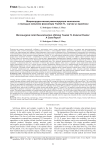
Microsurgical limb reconstruction utilizing Truelok TL external fixator:a case report
Статья научная
Coverage of lower extremity wounds, especially those in the distal leg, present challenges to the reconstructive surgeon. The present case illustrates a surgical technique utilizing a distally based reverse soleus muscle flap for coverage of an anterior leg wound deficit with exposed bone. The wound failed conservative wound care and was at risk of a below the knee amputation. The wound was first debrided to healthy bleeding tissue. The Truelok TL External Fixator was then applied for stabilization of the muscle flap. The medial portion of the soleus muscle was dissected with care to preserve its vascular supply and transposed to cover the wound defect. This was followed by utilization of the Integra Bi-Layer Matrix to control the vapor loss of the wound, act as a bacterial barrier, and provide a scaffold for cellular invasion and capillary growth. A wound VAC was applied to promote granular tissue formation. Following post-operative wound care, a split-thickness skin graft was later applied. The limb was salvaged and wound closure was achieved within three months. The patient began ambulating in a patella tendon bearing orthosis within four months. The reverse soleus muscle flap provides a viable option for ankle wound and anterior leg coverage, especially in medically frail patients. Due to a high degree of versatility, reliability, minimal donor site morbidity, less operating time, low cost and good functional gain; this procedure is highly suitable for the treatment of complex middle and lower leg defects. It should be considered in the reconstruction of soft tissue defects about the ankle, especially when the surgeon has exhausted all other conservative and surgical options.
Бесплатно
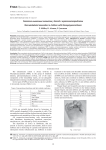
Musculoskeletal anomalies in children with mucopolysaccaridoses
Статья научная
Introduction The accumulation of glycosaminoglycan (GAGs) in the tissues in Mucopolysaccharidoses (MPS) can lead to skeletal anomalies (DYSOSTOSIS MULTIPLEX) and to soft tissue impairments (neural or medullar compression, joint stiffness, tenosynovitis). Here is a review of orthopedic issues frequently encountered in patients with MPS. Material and methods Surgery may be justified at different age and according to the type of MPS. Different surgical approaches and their indications are exposed in the article. Results The article exposes indications and techniques for orthopedic issues in MPS children: cervical stenosis, cervical instability, kyphosis, hip dysplasia and hip dislocation, genu valgum. Conclusion Various musculoskeletal anomalies can be found in patients with mucopolysaccharidoses. Neurological impairments are frequently seen due to cervical stenosis or instability and should be early detected with regular MRI of the cervical spine. Well-codified management should lead to favorable functional results and maintain functional and walking abilities.
Бесплатно
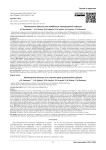
Mycobacterium abscessus как возбудитель перипротезной инфекции
Статья научная
Введение. Вид Mycobacterium abscessus относится к группе нетуберкулезных микобактерий, ответственных за хронические инфекции у лиц с ослабленным иммунитетом. M. abscessus способны колонизировать искусственные поверхности, в том числе медицинские и хирургические инструменты/устройства. В связи с низкой частотой встречаемости M. abscessus как возбудителя ортопедической инфекции он представляет несомненный интерес для практикующих врачей. Данный инфекционный агент является редким возбудителем, в отношении которого отсутствует отработанный лечебный алгоритм.Цель. Представить способ достижения успешного результата лечения пациента с перипротезной инфекцией, вызванной M. abscessus.Материалы и методы. Из историй болезни и выписных документов известно, что пациентке Х. по месту жительства выполнено тотальное эндопротезирование тазобедренного сустава. В раннем послеоперационном периоде манифестировали признаки острой инфекции послеоперационной раны.Результаты. Спустя три месяца пациентка госпитализирована в профильное учреждение с диагнозом хроническая глубокая перипротезная инфекция. При дообследовании установлена этиология процесса. Пациентке в две госпитализации последовательно выполнены 4 санирующие операции (в том числе мышечная пластика и установка антимикробного спейсера) и проводилась массивная парентеральная антибактериальная терапия в течение 8 месяцев, в том числе на амбулаторном этапе, с применением минимум 3-х антибактериальных средств. Спустя 4 года пациентка не предъявляет жалоб со стороны очага инфекционного процесса. Послеоперационный рубец 45 см без особенностей. Оставшееся укорочение правой нижней конечности 3 см компенсируется ортопедической обувью.Обсуждение. Лечение инфекции, вызванной M. abscessus, является сложной задачей вследствие природной устойчивости возбудителя к широкому спектру антибактериальных лекарственных средств. В литературе описаны единичные случаи ортопедической инфекции, вызванной данным патогеном. Все авторы сходятся в том, что залогом успешного лечения является комбинация радикальной хирургической санации и антибактериальной терапии с применением минимум трех антимикробных препаратов.Заключение. Длительная агрессивная антибиотикотерапия в комбинации с этапным хирургическим лечением позволила добиться успеха при лечении пациента с перипротезной инфекцией, вызванной Mycobacterium abscessus, после первичного эндопротезирования тазобедренного сустава.
Бесплатно
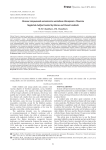
Neglected сlubfoot treated by Ilizarov and Ponseti methods
Статья научная
The Ponseti method has revolutionized clubfoot treatment. Though completely neglected clubfeet are now rare, partially or incompletely and improperly treated feet are not uncommon. Relapses after successful correction may occur due to non-compliance with bracing. In scarred soft tissues due to previous surgery, soft tissue distraction using external fixation helps achieve correction. The Ilizarov fixator permits us to follow the Ponseti protocol, using correction methods that may either be constrained or unconstrained by hinges. Applying force vectors perpendicular to the moment arm allows us to correct the equinus without damaging the ankle joint. All of the above is possible when the talus is round. Full correction of the deformity is possible. However, long-term follow-up of these patients has revealed stiffness of the ankle setting and frequently with tibio-talar osteophytes anteriorly. They are probably a reaction to excessive pressure developed in the joint due to the tight soft tissues. Hence the author has now added a mild shortening of the tibia and fibula to reduce soft tissue tension, rather than resorting to further soft tissue releases through scarred tissues. This allows faster correction with the Ponseti-Ilizarov protocol and allows good ankle range of motion to persist.
Бесплатно
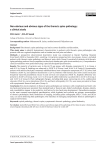
Non-obvious and obvious signs of the thoracic spine pathology: a clinical study
Статья научная
Background The thoracic spine pathology can lead to severe disability and discomfort.This study aims to identify determinant characteristics in patients with thoracic spine pathologies who present with non-regional complaints such as lumbar/cervical pain and others.Methods A prospective observational descriptive study was conducted at Basrah Teaching Hospital from March 2020 to December 2021, enrolling 114 patients categorized into two groups. Group A included patients with thoracic spine pathology and thoracic pain, while Group B consisted of patients with thoracic spine pathology and non-local symptoms (such as lower lumbar pain, pain in extremities, etc.). Comprehensive clinical evaluations were performed using a specially designed questionnaire.Results The majority of patients were in the 60-79 age group, with females comprising 55 % in Group A and 60 % in Group B. Smoking was observed in 28.98 % of Group A and 26.66 % of Group B. Symptomatic patients with solitary back pain commonly exhibited dorsal root compression symptoms (49.27 %), lower limb weakness (18.84 %), and sphincter dysfunction (7.24 %). Patients with thoracic plus lower and/or neck pain frequently reported paraesthesia (42.22 %) and cervical root symptoms (48.38 %). Kyphotic deformity was present in 20.28 % of Group A and 11.11 % of Group B, while tenderness was observed in 23.18 % of Group A and 13.33 % of Group B. Plain radiograph changes, including disk space narrowing (44.44 %), subchondral sclerosis (29.63 %), curve alterations (29.63 %), and facet arthropathy (25.9 %), were more prevalent in those with symptomatic thoracic back pain (Group A).Conclusion Non-local symptoms in thoracic spine pathologies are common, with complicated and multi-site low back pain being more prevalent than isolated back or thoracic pain. Elderly individuals, females, obesity, and comorbidities appear to be predictive risk factors for low back pain development. Paraesthesia emerges as the most common neurological manifestation, while kyphosis and scoliosis are primary presentations of thoracic pathologies. Multi-modalities of imaging, including plain radiographs, MRI, CT scan, and DEXA scan, can aid in detecting back pathologies. The mainstay of managing symptomatic thoracic pathologies is surgical intervention.
Бесплатно
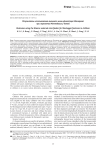
Outcomes using the Ilizarov external mini-fixator for Monteggia fractures in children
Статья научная
Objective To evaluate the use of Ilizarov external mini-fixation in the treatment of Monteggia fractures (dislocation of the radial head with an associated fracture of the proximal ulna) in children. Methods Children with proximal ulnar fracture were included and underwent fracture reduction surgery with Ilizarov external mini-fixators, followed by immobilization of the supinated forearm with plaster. The reduction was evaluated intra-operatively using arthrography. Mackay criteria were used to evaluate clinical outcomes at follow-up. Results A total of 15 children were included in the study. Mackay efficacy was 100 %, indicating excellent outcomes using the Ilizarov external mini-fixator. Conclusion Use of the Ilizarov external mini-fixator is particularly suitable in the treatment of children with comminuted and compression fractures of proximal ulna. It is easy to operate, low invasive and is worthy of promotion.
Бесплатно
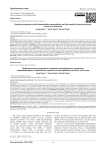
Статья научная
Introduction Forearm fractures are common injuries in childhood. Completely displaced and unstable fractures require surgical intervention. Elastic Stable Intramedullary Nailing (ESIN) is widely used in treating these fractures. Although stainless steel and titanium implants are the most widely used, resorbable nails are becoming an option.Aim To present our initial experience in treating forearm fractures in children with Resorbable Stable Intramedullary Nailing (ReSIN).Methods The authors present several cases treated with ReSIN, their summarry and describe the techniqual steps. Results The series included 4 patients operated on with ReSIN. Bone union with anatomic and functional recovery was stated in all cases within the period of 5-7 months after surgery.Discussion More and more paediatric fractures can be treated with absorbable implants and result in good outcomes. It can be said that the new methods enabled similar stable fixation as with metal implants, which is considered the gold standard. A distinct advantage over metal implants is that there is no need to remove the implant, thus avoiding a second operation and reducing the risk of surgical complications. Another positive thing is that absorbable implants can be sunk the level of the cortical layer of the bone, they can easily be dropped under the skin. The only drawback of the method is the price of the implants.Conclusion The management of paediatric diaphyseal forearm fractures with bioabsorbable intramedullary nails is a promising emerging alternative to the gold standard ESIN technique.
Бесплатно
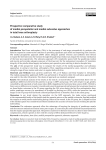
Статья научная
Introduction Total knee arthroplasty (TKA) is the treatment of end-stage osteoarthritis in patients who failed to respond to conservative treatment in providing significant pain relief and improving joint function. The medial parapatellar approach (MPP) allows adequate patellar eversion and sufficient knee flexion to expose the knee joint, but the incision through the quadriceps tendon may impair the extensor mechanism of the knee post-operatively. The subvastus approach (SV) completely spares both the quadriceps tendon and muscle and provides adequate exposure of the knee joint for the replacement procedure, SV maintains integrity of the patellar blood supply and reduces post-operative pain resulting in shorter hospital stay.The aim of this prospective study was to compare the results of the medial parapatellar and subvastus approaches in primary total knee arthroplasty (TKA) regarding postoperative pain, recovery of muscle strength, range of knee motion and return to regular daily activities.Materials and Methods Sixty patients underwent TKA at El-Hadara university hospital in Alexandria. The medial parapatellar apphroach (MPP) was performed in 30 patients while the subvastus approach (SV) was used for the other 30 patients. The choice of approach was randomly assigned.Results The statistical analysis of the results at the end of a 6-month follow-up showed that there were no significant differences between the patients in group 1 (MPP) and group 2 (SV) with respect to age, gender, comorbidity, side operated or body mass index (BMI). Regarding the functional knee scores (IKDC, WOMAC), there were no differences at 4 weeks, 3 months and 6 months postoperatively between the two groups. However, we found better outcomes in the SV group regarding the VAS score during the first five postoperative days, earlier quadriceps recovery by assessment of Straight Leg Raising test (SLR), while the operative time was longer in the SV group with less blood collected postoperatively in hemovac drain in the same group.Discussion In our study during the operation via the MPP approach, the index suture positioned at the superomedial border of the patella and the opposite suture on the medial retinacular flap had enabled the surgeon to avoid patellar maltracking during closure of the wound. In the SV group, the L-shaped incision of the medial capsule was considered an efficient landmark for accurate soft tissue closure avoiding the patellar maltracking.Conclusion The subvastus approach offers the advantage of keeping the integrity of quadriceps muscle and the extensor mechanism remains intact post-surgery. It causes less pain and less blood loss postoperatively than the regular parapatellar approach. The patient could recover the knee function in a shorter time with fewer complications, which is greatly in line with the concept of ERAS (Enhanced Recovery After Surgery).
Бесплатно
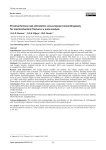
Статья обзорная
Introduction Intertrochanteric fractures account for almost half of all hip fractures, with a mortality rate of 15 to 20 % within one year following fracture, primarily in elderly patients aged 65 years old and older. The purpose of this study is to compare the operative time, intraoperative blood loss, intraoperative blood transfusion, hospitalization time, weight-bearing time, Harris Hip Score at 1, 3, 6, 12 months follow-up, and complications after proximal femoral nail antirotation versus bipolar hemiarthroplasty for intertrochanteric fracture in elderly patients based on the published literature of their comparison.Methods We conducted a comprehensive search in the electronic databases such as PubMed, Scopus, and Google Scholar. Original articles up to November 2024 were screened, focusing on retrospective or prospective cohort studies.Results and Discussion The initial search yielded 702 studies. Six cohort studies with a total of 495 participants were assessed. The Proximal Femoral Nail Antirotation (PFNA) showed statistically significant shorter operative time (p = 0.006), lower intraoperative blood loss (p function show_abstract() { $('#abstract1').hide(); $('#abstract2').show(); $('#abstract_expand').hide(); }
Бесплатно
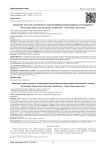
Pyomyositis: case series of 14 patients to study the significance of early diagnosis and management
Статья научная
Introduction Pyomyositis denotes primary pyogenic infection of skeletal muscle. It is predominantly a disease of tropical countries. It usually involves the largest muscle groups around the pelvic girdle and lower extremities. Primary reasons for delay in diagnosis are its low incidence and vague presentation [7]. This delay can result in complications such as extension into and destruction of an adjacent joint, sepsis and, even death. Our study is aimed to highlight the extent and sequence of treatment protocol required for good management of these patients. Methods We retrospectively analyzed our experience with a series of 14 pediatric patients with primary pyomyositis who were treated and followed up. There were five girls and nine boys. All 14 patients underwent plain radiographs, USG and MRI of the affected area followed by surgical drainage and a course of antibiotics. Patients were followed up with weekly CRP. Results Six out of 14 (42.9 %) patients had a history of mild trauma. Ileopsoas muscle was involved in 4 patients, 3 cases in which the gluteals or quadriceps were involved, 2 cases with obturator muscle involvement and 2 cases in which adductors were the infection site. All 14 patients were treated surgically. Conclusion Our study shows that early diagnosis, complete drainage of the purulent material and the use of appropriate antibiotic therapy are the key determinants of successful treatment that lead to complete resolution in the majority of cases.
Бесплатно
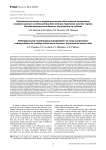
Статья научная
Optimizing the conditions for cranial bone fracture healing remains to be a relevant field of the current traumatology and orthopaedics. Purpose. To study the impact of compression on reparative osteogenesis when engrafting the resected flaps of calvarial bones. Materials and methods. Two groups of experiments performed in 20 adult mongrel dogs complying with all the requirements of the European Convention for the Protection of Vertebrate Animals used for Experimental and other Scientific Purposes. Dogs from Group 1 (n=10) underwent resection of the two sites of calvarial bones (the caudal flap preserved connections with surrounding soft tissues, the cranial flap - not preserved) of rectangular shape and 1.9×1.5 cm by size, they were laid into their former place and fixation performed with compression using thin wires with stoppers to the medial defect margin by transosseous osteosynthesis method. Compression produced by tightening fixing wires with the force of 40 kg. In Group 2 (n=10) bone flaps were laid into the defect without fixation. The investigations (clinical, radiological and histological) performed 7, 14, 21, 28 and 60 days after surgery. Results. Compression produced at the junction of the margins of free bone fragments and calvarial flat bone defect revealed to contribute to bone tissue formation in earlier periods of time. Conclusion. The results obtained in the present study formed the basis for using the technique of transosseous compression osteosynthesis in treatment of patients with cranial bone fractures in clinical departments of the Center.
Бесплатно
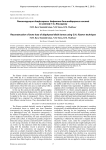
Reconstruction of bone loss of diaphyseal tibial bones using G.A. Ilizarov technique
Статья научная
The treatment of segmental defects in the diaphysis of long bones is one of the most difficult problems that a surgeon faces in his practice. Methods that are used to cover bone defects include bone autotransplantation [1], posterolateral bone transplantation [2], allotransplantation [3], and tibialization [4]. With the application of all the above traditional methods of treating bone defects, numerous surgical interventions are sometimes required. The period of treatment is long, the load on the limb may not be possible, and the functional results are often unsatisfactory. Recent studies have demonstrated that the method used GA. Ilizarov is more popular than the use of vascularized bone grafts, especially with large bone defects [5, 14].
Бесплатно
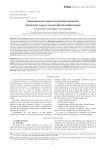
Reconstructive surgery in recurrent deformity (clubfoot relapse)
Статья научная
Introduction Recurrent clubfoot deformity may be due to either an imperfect initial correction, or a natural history of a severe disease. In the later, idiopathic clubfoot is uncommon. In the review we describe reconstructive surgery in recurrent deformity of idiopathic clubfoot. Material and methods Surgery may be justified at different age and according to the type of deformity. Different surgical approaches and their indications are exposed in the article. Results After Ponseti’s method application additional surgeries may be considered in recurrent clubfoot deformity which may represent 10 to 20 % of cases: second Achilles tenotomy, postero-lateral relapse, complete antero-medial and postero-lateral relapse, transfer of the anterior tibial tendon, correction of sequelae: metatarsus varus, residual equinus, residual rotation of the calcaneopedal unit. Conclusion Idiopathic equine varus clubfoot is a frequent condition. Well-codified management should lead to extremely favorable functional results. Unfortunately, some cases lead to a recurrence of the deformity. Surgical procedures are sometimes required. The goal is to avoid as much as possible arthrodesis and secondary degenerative arthritis.
Бесплатно
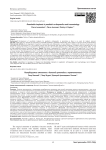
Resorbable implants in paediatric orthopaedics and traumatology
Статья научная
Background Development of resorbable implants for paediatric orthopaedics is promising as there is no need for implant removal.The aim of this paper is to present our experience in resorbable implants in paediatric traumatology, and to make an overview of the recent literature.Material and methods In our department of paediatric traumatology and orthopaedics, we have operated 7 children with fractures of long bones with resorbable screws (ActivaScrew™). The inclusion criteria were intra-articular and juxta-articular fractures in children with an indication for screw fixation. To prepare the review, we searched for information sources at the scientific platforms such as PubMed, Scopus, ResearchGate, RSCI, as well as other published products (Elsevier, Springer).Results The cohort is represented by 7 patients, 4 girls and 3 boys, aged from 5 to 14 years old. The 7 fractures were 3 at the elbow and 4 at the ankle joint. In the immediate postoperative period, no patient presented with abnormal swelling, redness, or tissue reaction. Pain disappeared at day 7 in all cases. Weight-bearing and return to sport activities were allowed in normal delay. Radiological bone union was obtained between 3 and 6 weeks. Range of motion in adjacent joints was comparable to the opposite non-fractured side at 3 months. There were no cases of complications, no infection, and no need for a reoperation.Discussion The use of resorbable implants, either co-polymers or magnesium, solves the problem: removal of implants is not anymore necessary. Resorbable implants are becoming safer as they have good solidity allowing bone union of fractures and osteotomies before their eliminating.Conclusion Main indications of resorbable implants in pediatrics remain fractures and osteotomies fixed with screws. The development of plates and intramedullary nails will enlarge the indications. Level of evidence: IV.
Бесплатно
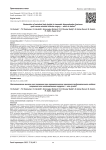
Статья научная
Background Percutaneous minimally invasive surgery (MIS) has been increasingly implemented to treat thoracolumbar (TL) fracture against a conventional open pedicle screw fixation (OPSF) with desirable radiological and clinical outcomes. Studies in the Indian context are required to determine the efficiency of MIS over OPSF. Objective To compare restoration and maintenance of vertebral body height (VBH) following MIS versus OPSF. Methods A prospective comparative study was conducted in a tertiary care hospital. Patients (n = 36) aged 18-65 years (males = 23, females = 13) with traumatic TL fractures were identified. Eighteen of them underwent OPSF and other eighteen underwent MIS. The radiological outcomes like anterior and posterior vertebral body height percentage (AVBH % and PVBH %) restoration and maintenance were evaluated. Quantitative variables were analyzed and described using mean ± standard deviation and qualitative variables were presented using frequency and percentage. Student t-test was used to analyse continuous data and Chi-square/Fisher Exact test was used to analyse categorical data. Results The mean age of the patients was 38.8 years. The majority of fractures were seen in the T12-LI segment (52.7 %). The AVBH % restoration and maintenance in OPSF was significantly higher compared to that of MIS at immediate post-operative (IPO) period (p = 0.01), 6 weeks (p = 0.02) and 12 weeks (p = 0.006) post-surgery. Long segment stabilization provided statistically significant AVBH and PVBH values for OPSF compared to MIS (p 0.05). Superficial surgical site infection (SSSI) was seen in both the groups without any statistical significance between them (p > 0.05). Conclusion OPSF is superior over MIS in the restoration of AVBH. Restoration of PVBH was also better with OPSF although not statistically significant. OPSF with longer segment fixation had better restoration of both AVBH and PVBH. The presence or absence of pedicle screw at fractured vertebral level did not seem to have any significance in both the groups. However, the MIS approach can be a reasonable alternative to open surgery with potential advantages like better clinical and functional outcome. A selected population of patients treated with MIS will show better surgical outcomes.
Бесплатно

